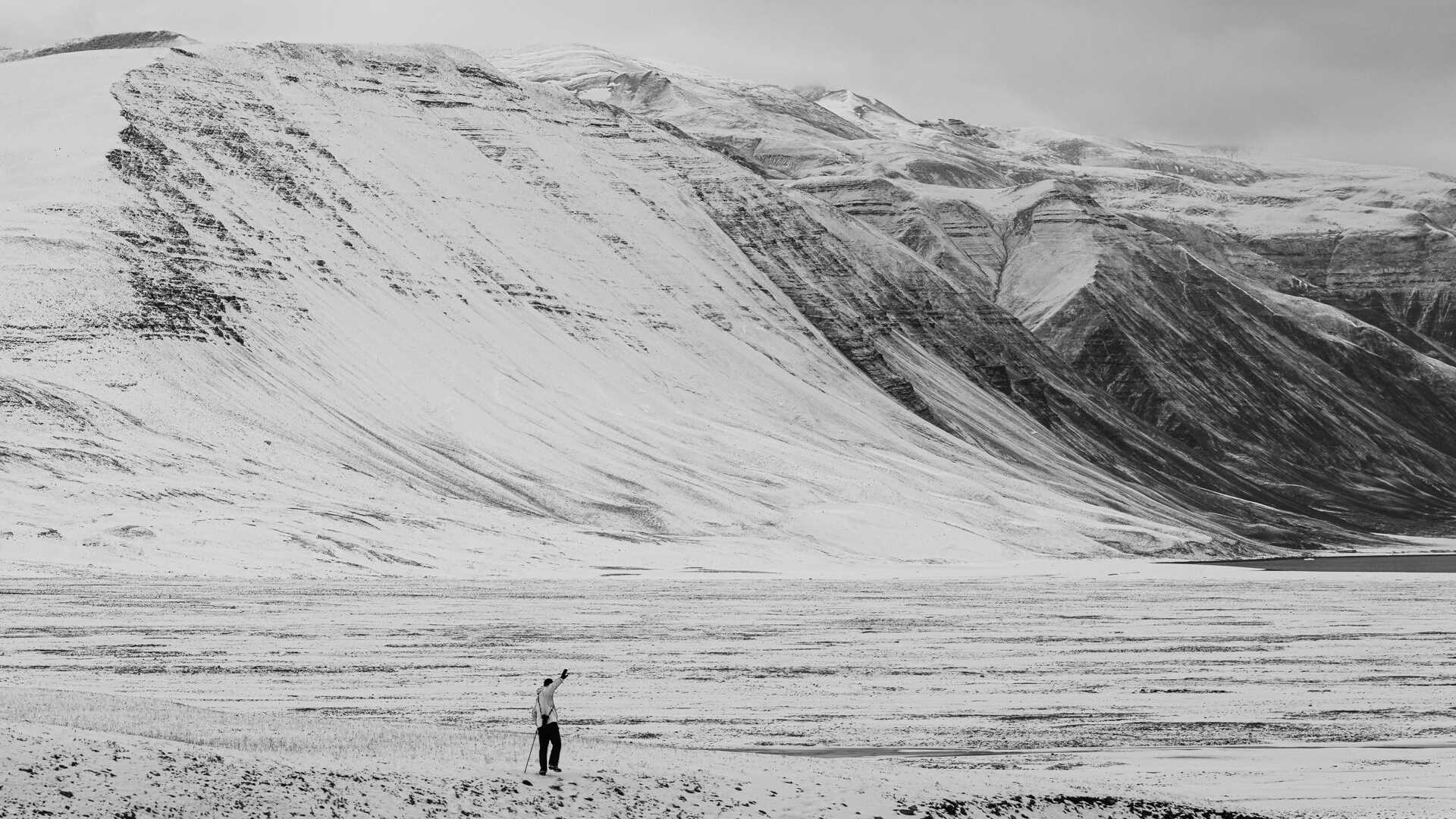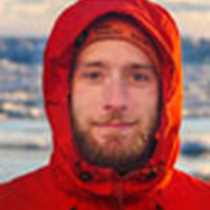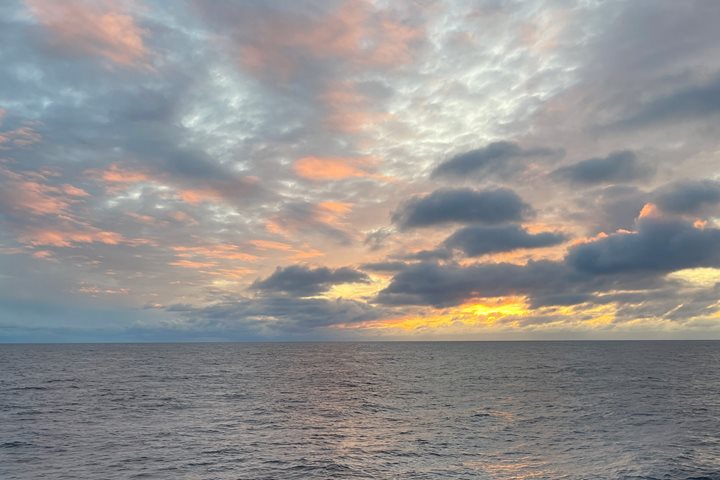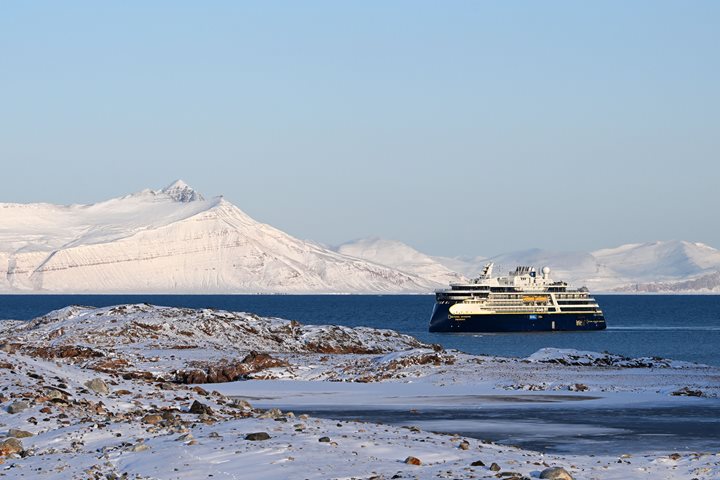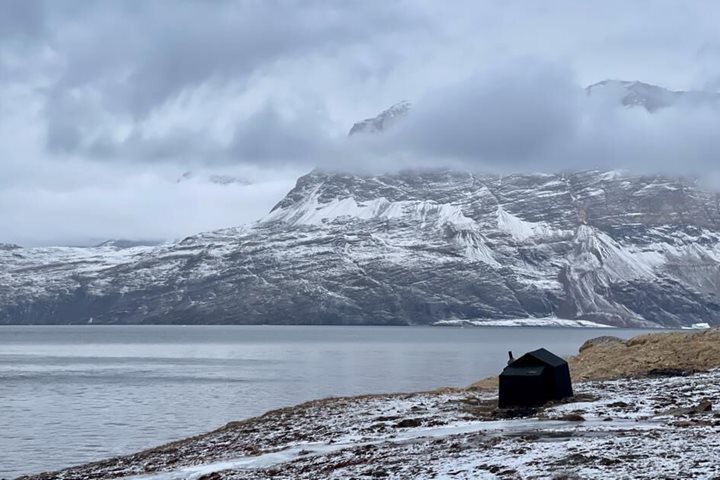After a restful night during which there was no sea ice to contend with and clouds obscured the aurora borealis, we awoke to calm and very cold conditions in the Northeast Greenland National Park. Summer has well and truly ended. Temperatures were several degrees below freezing, and a thin veil of snow laid over the land, accentuating the spectacular geology of the region.
Our morning landing took us to Fleming Fjord, a large indentation in the northern shore of Jameson Land. The fjord is rimmed by mountains that were gradually lit up by sunrise, while the distant entrance to the bay lurked under dark, heavy clouds. All in all, dramatic light conditions and the snow made for a beautiful morning hike.
As we repositioned over lunch towards the northwest, we transitioned from a Devonian and Triassic to a younger Jurassic landscape; the sedimentary strata became thinner, and the fossils within them changed. As we stepped ashore, the first thing that cultural specialist Lars Abelsen noticed was a tiny sea angel washed ashore. This half-inch-long zooplankton creature looked frozen and dead, and the undersea specialists brought it on board to show everyone at recap.
On shore, we explored the layered history of Antarctic Havn and the ruins of Helge Ingstad’s hut which documents Norway’s presence and ambitions in this part of Greenland in the 1930s. Meanwhile, the hotel team – dressed up as Vikings under hotel director Patrick’s expert guidance – prepared a delicious barbeque on the beach! This was a welcome treat in the cold temperatures, especially once the sun sank behind the mountains.
The evening recap held one more surprise – the sea angel had actually thawed and come back to life! We were able to admire it under the microscope and look forward to returning it to the ocean tomorrow.

